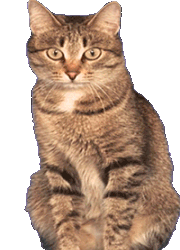A knight from a long forgotten kingdom, awoken from a magical sleep. Now I play video games and try to make you smile~ ⚔️ EN Knight Vtuber ⚔️ She/her | Adult | Seiso
Don't wanna be here? Send us removal request.
Text

wonderful pair of posts on the dash tonight
62K notes
·
View notes
Text
idk thinking about how sometimes you have to show up for people you aren't that close to, because sometimes you're just the person who's there. sometimes you invite a new friend to a party and end up having to sit with them through a panic attack. sometimes you run into an acquaintance on their worst day and they need to talk about what happened. sometimes someone is crying in a stairwell and you're the only one around to ask if they're okay. and none of this is "trauma dumping" or whatever the fuck it's just being there for people because you're the one in the room with them.
99K notes
·
View notes
Text
By the way, you can improve your executive function. You can literally build it like a muscle.
Yes, even if you’re neurodivergent. I don’t have ADHD, but it is allegedly a thing with ADHD as well. And I am autistic, and after a bunch of nerve damage (severe enough that I was basically housebound for 6 months), I had to completely rebuild my ability to get my brain to Do Things from what felt like nearly scratch.
This is specifically from ADDitude magazine, so written specifically for ADHD (and while focused in large part on kids, also definitely includes adults and adult activities):
Here’s a link on this for autism (though as an editor wow did that title need an editor lol):
Resources on this aren’t great because they’re mainly aimed at neurotypical therapists or parents of neurdivergent children. There’s worksheets you can do that help a lot too or thought work you can do to sort of build the neuro-infrastructure for tasks.
But a lot of the stuff is just like. fun. Pulling from both the first article and my own experience:
Play games or video games where you have to make a lot of decisions. Literally go make a ton of picrews or do online dress-up dolls if you like. It helped me.
Art, especially forms of art that require patience, planning ahead, or in contrast improvisation
Listening to longform storytelling without visuals, e.g. just listening regularly to audiobooks or narrative podcasts, etc.
Meditation
Martial arts
Sports in general
Board games like chess or Catan (I actually found a big list of what board games are good for building what executive functioning skills here)
Woodworking
Cooking
If you’re bad at time management play games or video games with a bunch of timers
Things can be easier. You do not have to be stuck forever.
80K notes
·
View notes
Text

Rise, Bladesmiths. Swordtember is upon us once more.
52 notes
·
View notes
Text
☆ DOKI BOOM DASH ☆
Fight through ruined city scapes & runaway trains to save Doki's fans... and maybe discover the true meaning of friendship along the way? JK! Just shoot fast!
Made by @mokadevs, cerasfish & I for Doki Jam!
🏆 mokadevs.itch.io/doki-boom-dash 🏆
296 notes
·
View notes
Text

The 2025 Swordtember prompt list is here!
If you're unaware, Swordtember is an online creative challenge I started back in 2020. The challenge is themed around swords and takes place across the month of September. From 3D models to D&D campaigns, and everything in between- it's always a blast to see what people make!
As always, this is intended to be a low stress challenge. There's no need to participate daily (I sometimes sit it out entirely because life gets so busy this time of year!). There's also no pressure to follow my prompt list- I know other people put out some amazing lists (and you can totally just freestyle and do your own thing, of course).
During September I'll be rounding up my favorite entries on Saturdays (Sworderdays?) from challenge participants to share on Bluesky and Instagram. Just post with #swordtember ! I'm so excited to see what people make this year.
Here's the written out prompt list:
shell
moss
automaton
scale
bell
fossil
clock
canine
feline
rodent
reliquary
concealed
bloom
rot
lace
carved
gem
beetle
membrane
vapor
ring
swan
owl
venom
bubble
harpy
spring
summer
autumn
winter
746 notes
·
View notes
Text

Calling it the Belle Epoque makes about as much sense as calling WW1 great, but at least the clothes slapped.
3K notes
·
View notes
Text
before you start writing there's one very important question you need to ask yourself

6K notes
·
View notes
Text
Oh god, why didn’t you just let him through?

82K notes
·
View notes
Text
Writing Characters with Wings: The Beauty, the Burden, and the Biomechanics
So you’re writing a character with wings. Angelic, draconic, demonic, fae, fallen, or otherwise — gorgeous. But if you want them to feel real, grounded in a world where wings are more than just aesthetics or metaphors, here’s your deep dive into everything you need to consider when writing winged characters.
Wingspan 101: The Numbers That Make It Work
Let’s talk size — because wings aren’t small, and the human body isn’t light.
A human-sized character needs massive wings to fly. The general rule from biology is that the wingspan must be at least 2.5 to 3 times the total body height to achieve lift — often larger if the character is dense with muscle or armor.
A 6-foot tall character would need wings at least 15-18 feet across (that’s 7.5–9 feet per wing!) — and even larger for powered flight or with weapons/gear/clothing.
Bat-like or dragon wings will be longer due to needing more surface area for lift, while bird wings rely more on shape, feathers, and aerodynamics.
And that’s not even getting into takeoff — unless they’re leaping off cliffs, running starts or magical assistance are necessary.
✍️ Tip: If your winged character flies easily from the ground, consider making flight magically assisted rather than biologically plausible. That frees you from gravity’s judgmental eye.
Everyday Difficulties of Wing Ownership
Having wings isn’t all ethereal silhouettes and poetic metaphors. Here are the gritty, unglamorous realities your characters would face:
Sleeping
Wings get crushed if you lie on your back.
Side sleeping is awkward if your wings are large or jointed.
Custom bedding? Absolutely. Maybe even hammocks, curved cushions, or nest-like bedding.
Clothing
Normal shirts and jackets won’t work.
You’ll need wing slits, open backs, or wraps that tie around the body. Think Roman togas or modern backless dresses.
Armour? Custom-forged and probably a pain. Don’t forget feather damage or joint pinching.
✍️ Consider how your character feels about their body being constantly on display. Wings often mean exposed backs and shoulders, which may create vulnerability, vanity, or resentment.
Doors and Crowds
Wide wings = tight doorways, smacking people in corridors, and no stealth in crowds.
Imagine folding your wings every time you sit, walk through a room, or pass a stranger.
✍️ Tip: You can give them a signature motion — like a wing flick when annoyed, or folding them tightly when anxious. Use wings as expressive body language.
Anatomy & Pain: The Biology Behind the Beauty
Let’s be honest: if we’re slapping wings on a human back, we’re violating all kinds of anatomical logic — but that’s okay if you build consistency into your world.
Placement
Real wings (like bird wings) emerge from the shoulder blade area and require massive muscles in the chest and upper back.
This means your winged character would likely have a thickened thorax, and expanded ribcage, and potentially a modified spine to support the muscle and articulation.
Pain and Maintenance
Wings get sore after long flights.
Molting? Yes. Feathers die and fall off.
Injuries like tears, broken bones, or ruffled feathers aren’t just painful — they can be humiliating, especially if wings are a sign of status or identity.
✍️ Treat wings like hands or limbs — they require grooming, get tired, and define personality.
Symbolism & Emotional Weight
Wings often carry metaphorical meaning — and this is where your story can shine.
Liberation or Burden?
Are wings a gift? A sign of divine favor?
Or are they a curse — a mark of something inhuman, a heavy cross to bear?
Intimacy
Touching someone’s wings might be deeply intimate, even erotic or sacred.
Wing injuries could feel like a violation, akin to broken hands or scarred faces.
✍️ Try writing a scene where someone helps preen feathers, cleans wounds, or covers their wings with a blanket. That’s not just care — that’s vulnerability, love, and trust in one.
Emotional Tics
Wings can curl inwards when frightened or sad, flare open when defensive, or shudder when someone’s overwhelmed.
Use them to externalise emotion without needing dialogue.
Societal & Cultural Impacts
If some people have wings and others don’t — that matters. A lot.
Are winged beings seen as divine, or dangerous?
Can they fly freely, or are they kept grounded by laws, jealousy, or architecture?
Are winged people segregated, idolised, or feared?
✍️ A culture that evolved around flight might have multi-level cities, mid-air rituals, different greetings, or class divisions based on wingspan.
Dark Wings, Darker Implications
If your character can’t fly — even with wings — that’s a story.
Maybe their wings are damaged, too small, or shamed.
Maybe they’re haunted by a fall or terrified of heights.
What does that do to a person — to have wings but be bound to the ground?
That contradiction can become a core part of a character arc — not just about wings, but about freedom, failure, and fear.
In Summary
Characters with wings are so much more than “a human but cooler.” They’re a walking contradiction — majestic and awkward, powerful and vulnerable, soaring and struggling.
So write their aches. Write the mornings they wake up with crumpled feathers. Write the power trip of rising above the world, and the terror of falling. Write them like people — winged, wounded, wonderful people.
💬 Reblog with your favorite winged characters, your original ones, or the best wing-related scene you’ve ever read or written! I’d love to see what you’re working on.
404 notes
·
View notes
Text
194K notes
·
View notes




